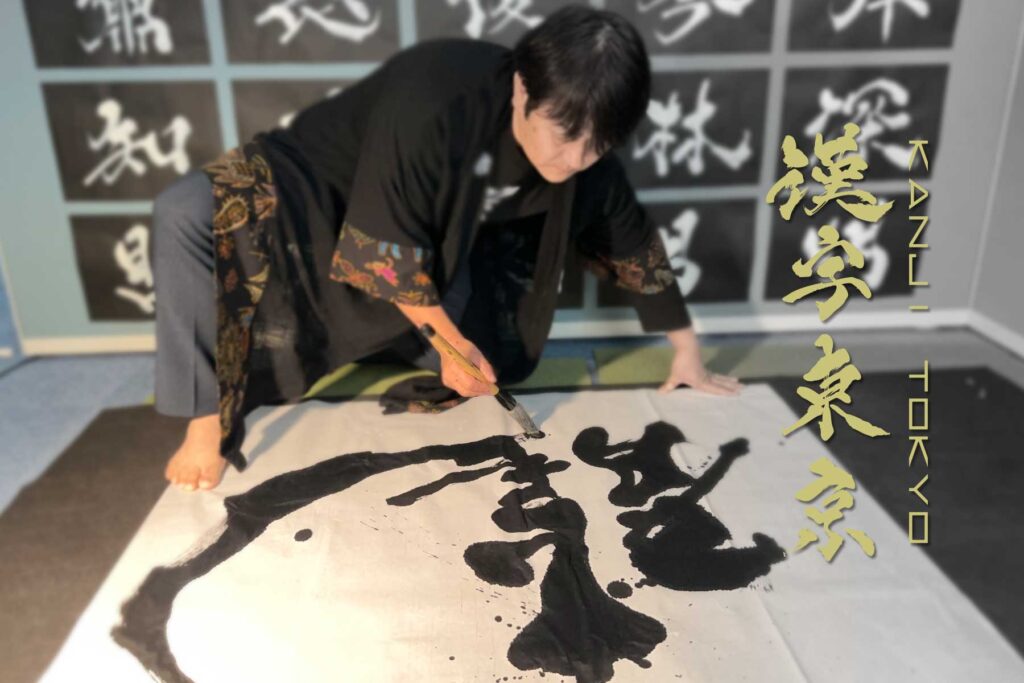What is Japanese calligraphy?
Japanese calligraphy is a traditional Japanese art where you express your thoughts and feelings through writing. Its origins come from China, and Chinese calligraphy was brought to Japan around the 8th century ( Nara period ) and 9th century ( Heian period ).
So, why did Japanese calligraphy come from China to Japan? This happened because Chinese culture had a strong influence on Japan. In ancient Japan, people used Chinese characters for learning, and Chinese poetry and writing were highly valued. Japanese calligraphy was part of this culture and was seen as an important skill.
Buddhism also helped the development of Japanese calligraphy. Buddhism arrived in Japan through China in the 6th century. To spread the teachings of Buddhism, monks had to copy religious texts. This practice, known as ” shakyō ” ( writing scriptures ), was not just about writing, but also about spiritual training. The monks believed that writing these texts helped purify their hearts. This practice deepened the connection between Buddhism and Japanese calligraphy in Japan, influencing its art and meaning.
Japanese calligraphy Today
Even though people today use pens and computers to write, Japanese calligraphy is still popular. Why is this? One reason is that Japanese calligraphy helps people focus and relax. In today’s digital world, writing by hand has become rare, but writing with a brush allows people to express emotions and thoughts. Using a brush also gives people a peaceful moment, which is different from typing on a keyboard.
Sometimes, Japanese calligraphy is seen as a form of art. For example, Japanese calligraphy exhibitions often show beautiful and strong pieces of art. The beauty of the lines and the use of space in Japanese calligraphy are admired as visual art.
Japanese Values in Japanese calligraphy
Japanese calligraphy also shows important Japanese values, like ” ichigo ichie ” and ” wabi-sabi. “
” Ichigo ichie ” means ” once-in-a-lifetime meeting, ” reminding us that each moment is special and cannot be repeated. In Japanese calligraphy, each brushstroke is unique. The process of writing a word carefully reflects the idea that each moment is important and cannot be exactly recreated.
” Wabi-sabi ” is the Japanese idea that beauty can be found in simplicity and imperfection. In Japanese calligraphy, this value is shown by avoiding over-decoration and focusing on simple beauty. The brushstrokes create a quiet beauty, and this reflects the Japanese appreciation for things that are calm and unpretentious.

History and Growth of Japanese calligraphy
Japanese calligraphy became an important part of Japanese culture after being introduced from China. During the Edo period ( 1603–1868 ), when many people lived in towns, Japanese calligraphy spread even more. It was not just a skill for scholars but became part of everyday life, even among common people.
Today, Japanese calligraphy is still popular in Japan. Many schools teach Japanese calligraphy, and children learn how to write beautifully. Through Japanese calligraphy, students not only learn to write well, but they also develop focus, patience, and respect. Japanese calligraphy clubs and classes are available for people of all ages. Japanese calligraphy is important because it helps people calm their minds, connect with tradition, and grow mentally.
Conclusion
Japanese calligraphy is more than just writing; it’s a way to express your heart and mind. The traditional techniques and Japanese values still make Japanese calligraphy beloved by many today. By practicing Japanese calligraphy, people learn important values like “ichigo ichie” and ” wabi-sabi ” while taking time to calm their minds. Japanese calligraphy continues to be an important part of Japanese culture, and it will likely be passed down for generations to come.
